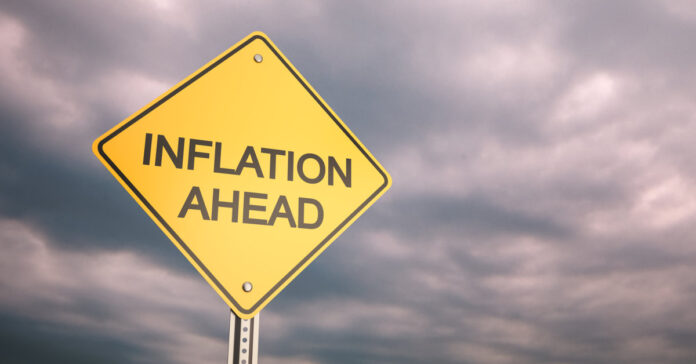I’ve written about limits on limits on toilet paper at the big box stores at least twice in the past month, but Fox Business is finally catching on, running a story on the topic Thursday. However, the article did have some useful data relating to inflation:
“Both Costco and its suppliers are paying two to six times more for containers and shipping, 4% to 8% more for pulp and paper goods, 5% to 11% more for plastic and resin products such as trash bags, cups and plates and 3% to 10% more for certain apparel products. In addition, Costco has seen single-digit price increases for aluminum foil and cans for soda and other beverages and mid to high single-digit price increases on fresh foods, with meat leading the way with high single to low double digit price increases due to feed, labor and transportation costs. Commodities like oil, coffee and nuts are at five year highs, according to Costco’s buyers.
“He also warned that an ongoing chip shortage impacting Costco’s electronics and appliances will likely extend into 2022.”
Those figures, and other data from big corporations, are probably far more accurate than anything reported by the government.
Average Inflation Isn’t Average
When the government reports inflation, they base it on a basket of goods. The problem is, most of us aren’t buying the entire basket.
For example, people who own a home may choose to stay in their home instead of moving. That means the cost of housing doesn’t immediate affect them. Likewise, someone may choose to keep their car for a year or two longer than they planned, waiting until the price of cars stabilizes. When times are tight, the person who upgrades their iPhone every time a new model comes out may hold off a year. But you can bet everyone eats. Food inflation hits home for all of us.
Most of us drive cars and all of us buy products that are transported across the country by trucks and across the oceans in containers. (The last time I filled my gas tank, it cost more than $48.) We all use electricity, too. That means we cannot avoid energy inflation.
Yet food and energy are often what the government leaves out of their standard calculations, calling them “volatile.” Well, that volatility hits us in our pocketbooks.
You and I know what inflation is doing to us, and Costco knows what it is doing to their prices. They are paying anywhere from 3 to 11 percent more and their shipping costs are up two to a whopping six times.
Eventually, that’s going to get passed on to us.
The Inflation Cycle
Wherever you shop, Walmart, Target, a grocery store, the local market, they are all going to pass the costs along. And today’s rising costs for producers are going to mean higher sales prices in a year. If it takes 18 months to raise a steer to its butcher weight, beef is going to be far more expensive in 18 months than it is today, and it’s already expensive today.
Companies that can’t find enough employees are going to have to raise their starting wages. I’m all in favor of paying people more, but that’s going to get incorporated into the cost of goods. Let’s assume your local fast food franchisee spends 25 percent of sales on labor. If they have to boost their hourly wages by $3 and pay a signing bonus, that’s might increase the labor to 30 percent or more. They then have to recoup that by raising prices until labor again equals only 25 percent of sales. If the cost of chicken and beef are going up at the same time, they may have to raise prices 10 or 15 percent just to stay even.
That means consumers are paying 10 to 15 percent more for their chicken sandwich or burger. They complain to their boss. Unionized workers complain to their union. Pretty soon there is more wage pressure and the cycles starts again.
In the last big spate of inflation in the late 1970s and early 1980s, some companies gave their employees a cost of living increases every quarter or six months. We could see that again.
Jump Ship to Raise Your Base Pay
This is an ideal time to get a new job that pays more than your current position. Many companies are desperate for skilled workers. You could parlay your experience into a 20 percent raise. That increases your base, and those cost of living increases will come on top of that.
I have a feeling that over the course of the next few years, you are going to need every penny, not just to keep your current standard of living, but to keep food on your table, gas in your tank, and to heat your house when natural gas prices rise this winter.







